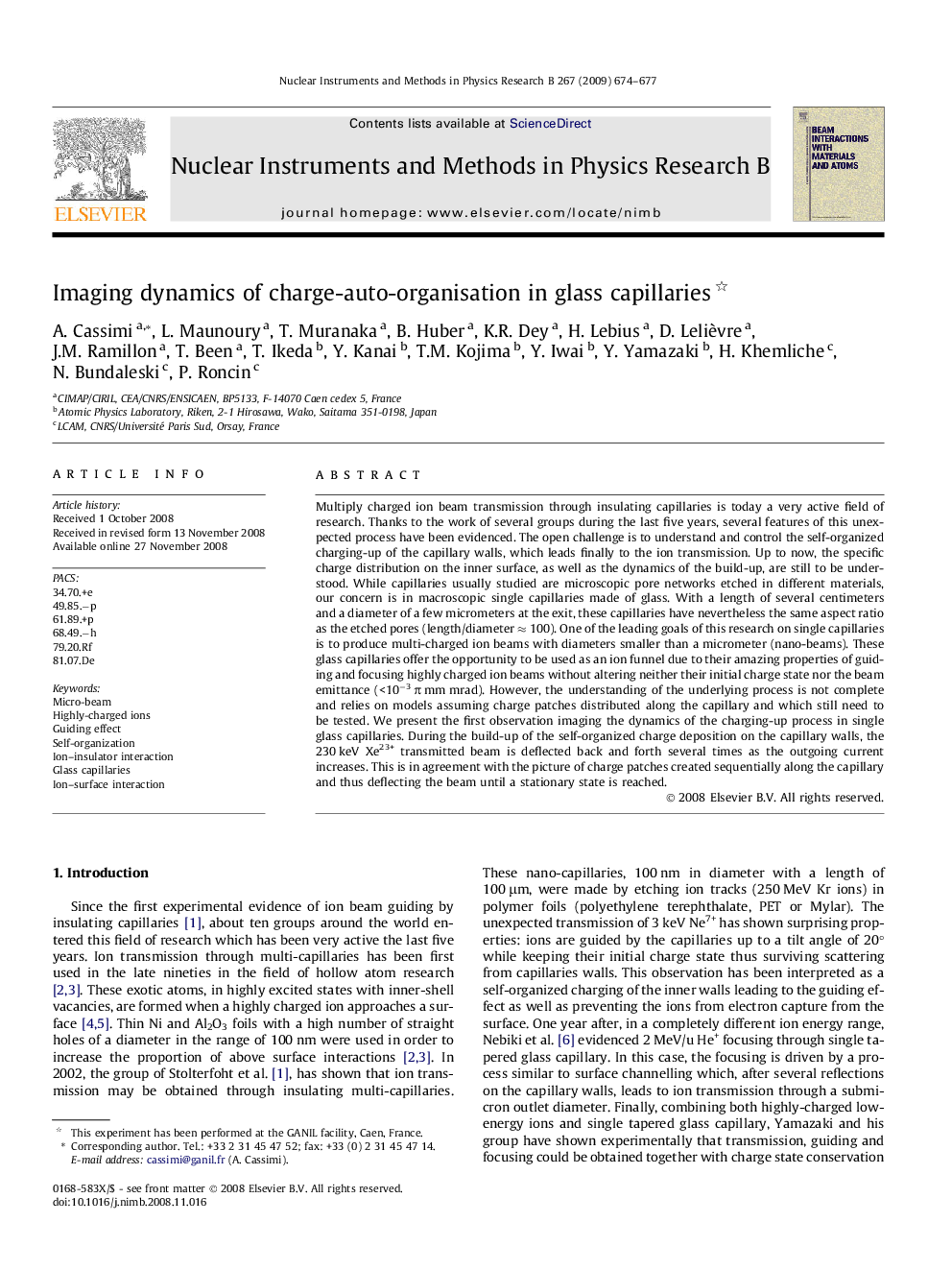| کد مقاله | کد نشریه | سال انتشار | مقاله انگلیسی | نسخه تمام متن |
|---|---|---|---|---|
| 1684183 | 1010524 | 2009 | 4 صفحه PDF | دانلود رایگان |
عنوان انگلیسی مقاله ISI
Imaging dynamics of charge-auto-organisation in glass capillaries
دانلود مقاله + سفارش ترجمه
دانلود مقاله ISI انگلیسی
رایگان برای ایرانیان
کلمات کلیدی
موضوعات مرتبط
مهندسی و علوم پایه
مهندسی مواد
سطوح، پوششها و فیلمها
پیش نمایش صفحه اول مقاله

چکیده انگلیسی
Multiply charged ion beam transmission through insulating capillaries is today a very active field of research. Thanks to the work of several groups during the last five years, several features of this unexpected process have been evidenced. The open challenge is to understand and control the self-organized charging-up of the capillary walls, which leads finally to the ion transmission. Up to now, the specific charge distribution on the inner surface, as well as the dynamics of the build-up, are still to be understood. While capillaries usually studied are microscopic pore networks etched in different materials, our concern is in macroscopic single capillaries made of glass. With a length of several centimeters and a diameter of a few micrometers at the exit, these capillaries have nevertheless the same aspect ratio as the etched pores (length/diameter â 100). One of the leading goals of this research on single capillaries is to produce multi-charged ion beams with diameters smaller than a micrometer (nano-beams). These glass capillaries offer the opportunity to be used as an ion funnel due to their amazing properties of guiding and focusing highly charged ion beams without altering neither their initial charge state nor the beam emittance (<10â3 Ï mm mrad). However, the understanding of the underlying process is not complete and relies on models assuming charge patches distributed along the capillary and which still need to be tested. We present the first observation imaging the dynamics of the charging-up process in single glass capillaries. During the build-up of the self-organized charge deposition on the capillary walls, the 230 keV Xe23+ transmitted beam is deflected back and forth several times as the outgoing current increases. This is in agreement with the picture of charge patches created sequentially along the capillary and thus deflecting the beam until a stationary state is reached.
ناشر
Database: Elsevier - ScienceDirect (ساینس دایرکت)
Journal: Nuclear Instruments and Methods in Physics Research Section B: Beam Interactions with Materials and Atoms - Volume 267, Issue 4, February 2009, Pages 674-677
Journal: Nuclear Instruments and Methods in Physics Research Section B: Beam Interactions with Materials and Atoms - Volume 267, Issue 4, February 2009, Pages 674-677
نویسندگان
A. Cassimi, L. Maunoury, T. Muranaka, B. Huber, K.R. Dey, H. Lebius, D. Lelièvre, J.M. Ramillon, T. Been, T. Ikeda, Y. Kanai, T.M. Kojima, Y. Iwai, Y. Yamazaki, H. Khemliche, N. Bundaleski, P. Roncin,